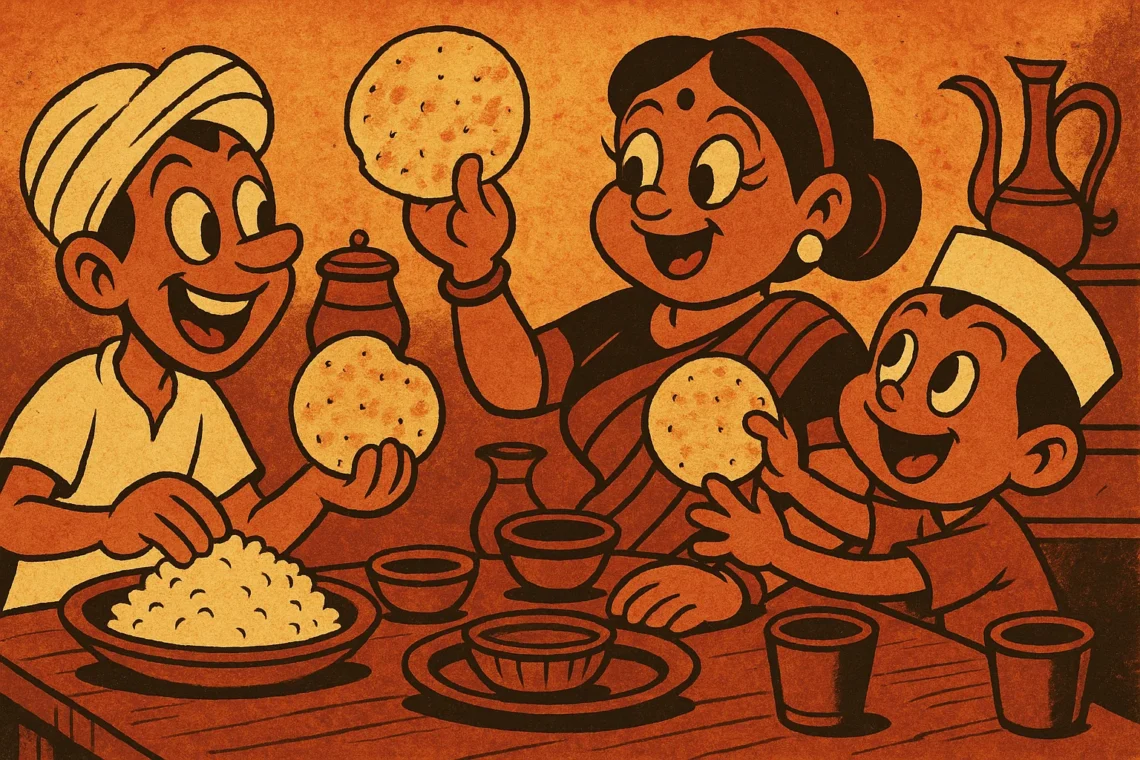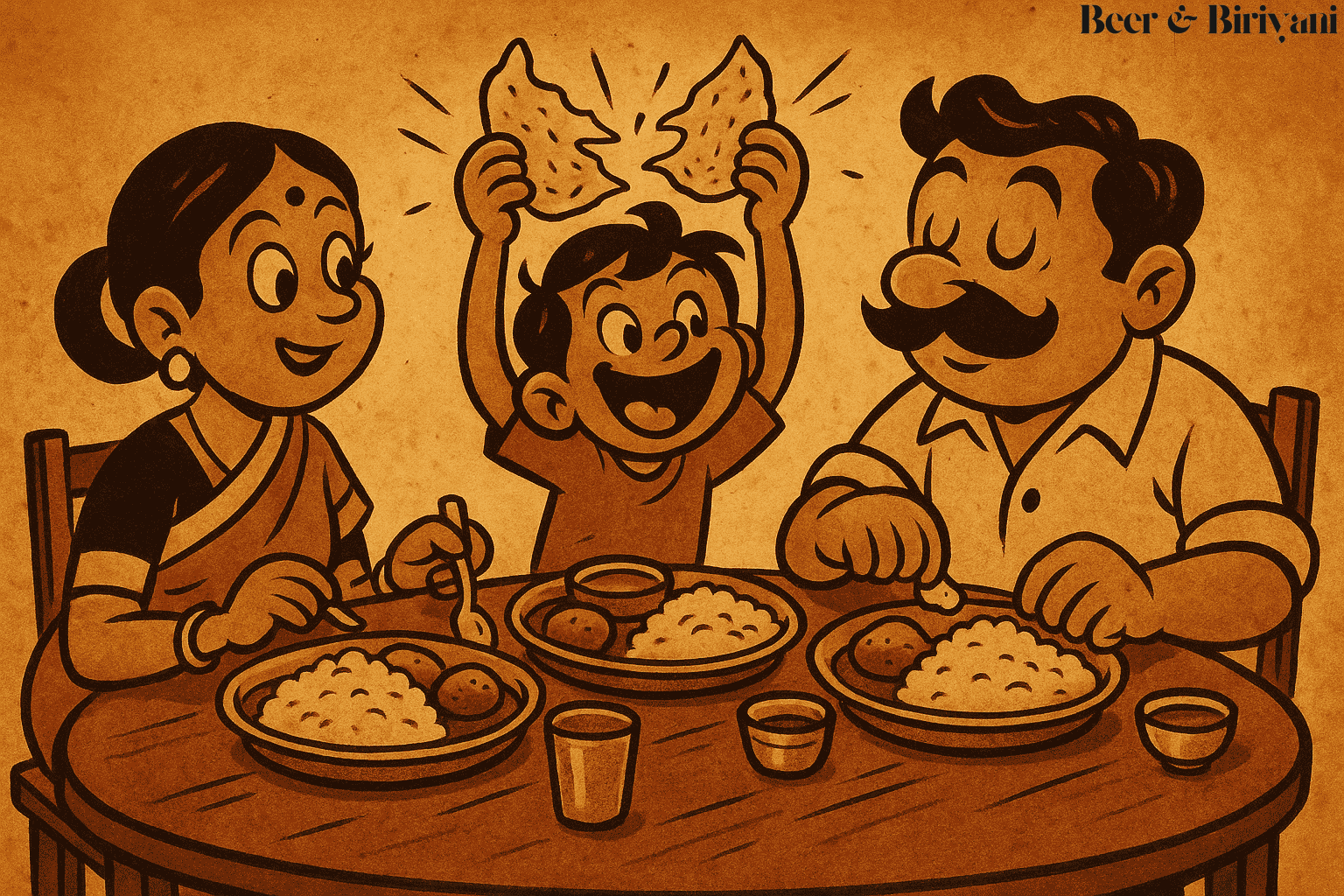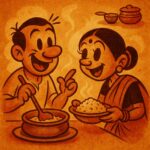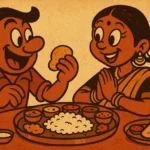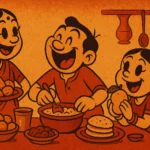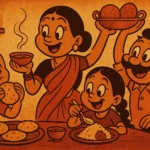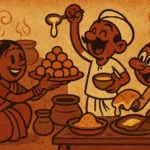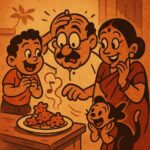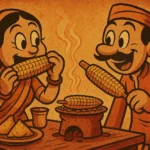You could always hear it before you saw it—the quick puff of the gas flame, the metallic clang of tongs, and the dry, crinkling sound that meant someone was roasting papad. In our house, papad wasn’t a side dish. It was a birthright. A default setting. A flat, crispy punctuation mark at the end of every sentence on the plate.
It didn’t matter what was being served—dal-chawal, sabzi-roti, leftover khichdi, or even plain curd rice. There would be papad. Sometimes roasted directly over the gas flame till it blistered and curled like a sunburned postcard. Sometimes deep-fried into a shatteringly greasy disc of delight, the oil crackling like it was telling secrets. Occasionally microwaved during “health” phases, though that papad never had the same soul. It just sat there like it was sulking.
The Last-Minute Star
Papad was always a last-minute entry. You’d be halfway through lunch, and someone would get up—usually a younger cousin ordered around—to go roast one. “Thoda papad le aana,” was a standing request, almost as common as “aur thoda rice de.” The person on papad duty became the unofficial MVP of the meal. They’d return triumphantly, holding a hot, just-charred disc between tongs or wrapped in a kitchen towel, slightly smug about the elevation they’d just brought to the meal.
There was drama too. Burnt edges? Papad emergency. Snapped in half before serving? Bad luck. Someone took a piece without offering it to others? Outrage. Because papad wasn’t just about taste. It was about timing. Texture. Fairness.
A Crunch That Belonged
That crunch was more than just sound. It was structure. Meals without papad felt incomplete. Bland, no matter how well-spiced the food was. You needed that brittle contrast, that salty snap, that almost-too-loud interruption in every bite. It wasn’t a flavor enhancer—it was a textural companion. Something to fill in the silence between bites, or between conversations.
We didn’t just eat papad. We customized it. Topped with onions and tomatoes for instant papad chaat. Broken into shards and mixed with leftover rice when laziness won. Crushed over dal for that extra zing. Sometimes just eaten plain, standing by the stove while pretending to wait for tea. It was edible punctuation, versatile and dramatic.
The Many Forms of Papad
There were loyalties too. Urad dal papad, moong dal papad, jeera papad, pepper papad, rice papad—the roster was vast. Some had holes. Some were speckled with red chilies. Some came from relatives who swore their version was “purer” because it was made on a terrace in Jaipur. And all of them had one thing in common: they never lasted more than three days in the house.
Every few months, someone would attempt a bulk papad-buying spree, claiming we should stock up “for guests.” Those papads would disappear in a week. There were never guests. Just family members quietly roasting them at odd hours, caught red-handed with a half-burnt one and a sheepish smile.
Exported Crunch
Now, in Austin, I have a stash of papad in the pantry. Imported from India, hoarded like treasure. I roast them over the open flame on my gas stove, carefully watching the edges curl, flipping quickly so they don’t burn. It still feels like a homecoming. That first crack as I break it in half? Instantly transports me to the kitchen back home, ceiling fan swirling above, conversations echoing through the hallway, and the smell of masala dal on the stove.
My son watches, curious. He prefers chips. But one day, I hand him a piece of freshly roasted papad, warn him it’s hot, and he takes a bite. The crunch makes him giggle. He asks for more. I hand him the tongs. He holds them like a sword, proudly burning the edges. A new papad story begins.
Always on the Plate
Papad isn’t a side. It’s a ritual. A soundtrack. A cultural compass that says, “This is how we eat.” It tells you that no matter how simple or grand the meal is, there’s always room for something that cracks, shatters, and somehow brings everything together. You don’t always remember the curry. But you remember the papad. How it broke perfectly. How it was fought over. How it made the whole meal feel complete.
Because some memories are soft and nostalgic. And some? They’re crisp, salty, and roasted just right.
Born in Mumbai, now stir-frying feelings in Texas. Writes about food, memory, and the messy magic in between — mostly to stay hungry, sometimes just to stay sane.

